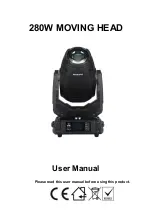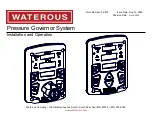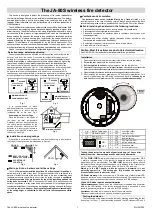
FEATURES AND USE
WARNING: Improper use of Dive Instruments may result in serious
injury or death. Read and understand these instructions thoroughly
before you dive with any Oceanic Analog Instrument.
Oceanic Instruments should not be used by anyone who has not re-
ceived proper training and certification in scuba diving.
Oceanic promotes responsible diving practices.
Never spray aerosols of any kind on, or near, an Instrument. Pro-
pellants may chemically attack the plastic.
Never poke any object through slots or holes on the rear of the In-
strument. Doing so may damage mechanism resulting in inaccurate
readings.
Never attempt to disassemble an Instrument Module for any rea-
son.
SLIMLINE PRESSURE GAUGE:
Maximum Pressure = 5,000 psi (350 BAR)
Temperature = 0 to 100°F (-5° to 45°C)
Thread Size = 7/16 - 20 UNF
Attachment of the high pressure Hose to the Regulator First Stage should be performed
by your Authorized Oceanic Dealer. If this is not possible, proceed as follows:
Locate your Regulators high pressure Port (marked HP) and remove the Port Plug.
If there is more than one HP Port Plug, determine proper orientation of the First
Stage on the tank before selecting a Port.
Place a small dab of halocarbon based lubricant (Christo-Lube MCG 111) on the
hose end threads and o-ring.
Thread the Hose into the HP Port and tighten until secure (35 to 40 inch pounds).
To test the connection, attach the Regulator to a full Tank, pressurize the system,
and listen for leaks.
Always keep the Pressure Gauge dial away from your face when
turning on your tank valve.
Never obstruct the one-way vent valve located on the back side of
the Gauge.
Never attempt to remove the Hose Coupling from the Pressure
Gauge Module.
MAX DEPTH GAUGE:
The Black Needle with the Red Tip indicates Current Depth and as depth increases it
pushes the thinner Needle. As depth decreases, the Black Needle with the Red Tip con-
tinues to indicate Current Depth while the thinner Needle remains at the Maximum
Depth reading achieved.
To reset the Max Depth (thinner) Needle for a new dive, turn the slotted Knob located in
the center of the gauge face counter clockwise until it just makes contact with the Black
Needle with the Red Tip.
Never obstruct the Depth Sensor opening located on the back side
of the Gauge.
COMPASS:
The Compass has a luminous card (instead of a needle) that allows use of either the
relative or bearing methods of navigation. A side window with numeric heading assists
you in keeping on course. See your Authorized Oceanic Dealer for more information
about Navigation courses or Navigation methods.
WARRANTY
Refer to the Warranty Registration Card provided by your Authorized Oceanic Dealer.
ANNUAL INSPECTION
Once each year, return the Gauge(s) to your Authorized Oceanic Dealer for inspection.
The authorized dealer service technician will inspect the gauges, verify accuracies, and
replace the Pressure Gauge High Pressure Swivel (Air Spool). Note that the cost of in-
spection is not covered by the product's limited warranty.
POST DIVE MAINTENANCE
After each day of diving:
Immerse the instrument in fresh water (warm water is best).
Soaking for one hour minimum is best.
Flush with running fresh water, flushing any holes or slots on the rear of the Instru-
ment Boot.
Towel dry before transporting or storing.
Keep out of direct sunlight.
Transport in a padded carrying case or equipment bag separated from heavy
items (i.e., first stage) that might
damage the instrument face. Do Not transport in the hot trunk of a car.
Store in a cool, dry place.
© 2002 Design 1998
Doc. No. 12-2124-r05 (4/19/06)
R
E
S
P
O
N SIBLE
D
IV
E
R
ANALOG INSTRUMENT
(Pressure Gauge, Depth Gauge, Compass)
Owner's Guide
and
Boot Installation/Removal Instructions
for
Analog Instruments and Dive Computers
NOTE: This information does not apply to the SWIV or Veo line.




















